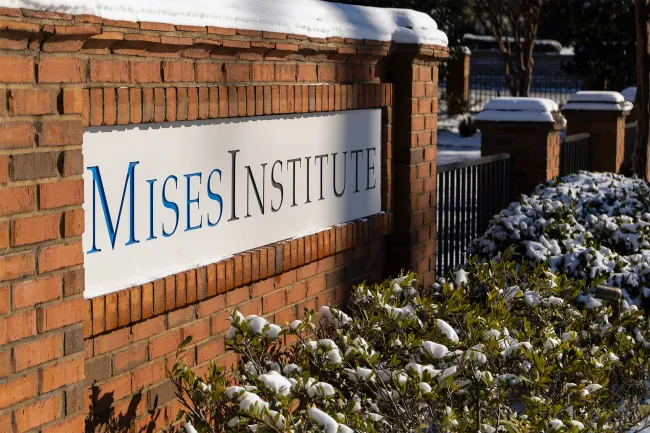Last Sunday, Donald Trump’s Department of Justice announced that they had concluded that Jeffrey Epstein did not have a list of clients and that the convicted sex offender and formerly well-connected financier really did die by suicide. To back that up, the DOJ released video footage from the area outside Epstein’s prison cell that they claimed was raw—although the clip’s metadata indicated it was exported from video editing software—and declared the entire case closed.
Of course, the existence of a single client list or the specific manner of Epstein’s death have always been secondary to the real questions his case raised. First, Epstein’s partner, Ghislaine Maxwell, was convicted on federal charges of trafficking young girls, but who was receiving them? And second, who, if anyone, was directing, aiding, or bankrolling Epstein’s activities?
That, specifically, is what those who have been following this case closely for years were hoping to learn after Trump appointed Kash Patel and Dan Bongino to run the FBI. After all, both had spent years talking about the case and suggesting they had inside information indicating that the case goes much deeper than the government has officially acknowledged. But, after pointing to DOJ’s conclusions on those two secondary details—backed up by extremely flimsy public evidence—both fell in line with Attorney General Pam Bondi and declared the entire matter settled. All with Trump’s support.
What’s made this episode notable is not how unconvincing the government’s evidence is, and not that a politician and those he appointed completely flipped around on an issue and abandoned a campaign promise—that happens all the time. What made this particular announcement notable has been how the right is reacting to it.
Ever since Trump began gaining momentum in the 2016 primary, his opponents have tried to characterize his level of support as some kind of mass indoctrination that’s emanating from him. As far as they were concerned, most right-wingers had been mild-mannered Mitt Romney Republicans until Trump came in and started tricking them into adopting his own deranged worldview with lies, fake news, and Russian propaganda. In other words, the theory was that Trump was the cause of the change in the American right, rather than the candidate who best picked up on changes that were already occurring on the right.
That assumption drove the establishment’s strategy for opposing Trump. If he were really the catalyst behind this wave of anti-establishment energy, then removing him from power would stop the wave.
So, they tried. First, higher-ups at the Justice Department considered leading an effort to oust Trump early in his first term using the Twenty-fifth Amendment. When that didn’t pan out, the same department led the public to believe Trump was an asset of Russian intelligence. When the head of the investigation was finally forced to admit there was no credible reason to believe Trump had acted on behalf of or colluded with the Russians, Trump’s opponents in government pivoted and tried to impeach him. First, it was for technically attempting a quid pro quo with Ukrainian President Zelensky that he had quickly abandoned—if it was ever real in the first place—and then later for inciting the crowd that stormed the Capitol on January 6, 2021.
After Trump left the White House that year, he had been kicked off of social media and mostly disappeared from public life. As the Biden administration got rolling, the establishment’s strategy appeared to have worked. But to be safe, federal and state officials charged Trump with a combined 86 felonies in an attempt to disqualify him from ever holding office again—if not legally, then at least in the minds of voters.
But it didn’t work. Trump came back and won back the White House last year.
While some of Trump’s opponents in the political classes surely concluded that they had simply not done enough, others clearly recognized that a new strategy was needed. If Trump couldn’t be stopped, the thinking went, maybe he could be co-opted.
Trump is one of the least ideological presidents in American history. And so, again, if he alone was really determining what all his supporters thought and believed in, all the risks to the established power structure in DC could be quelled if Trump was convinced to adopt the same old status-quo Republican policies by dressing them up and presenting them in brand new, MAGA-friendly, “America First” language.
Although we are only about seven months into Trump’s four-year term, it’s clear that the co-option strategy is already paying off. With foreign policy—which is, by far, the political establishment’s priority—Trump almost immediately chose to continue Biden’s policy in Yemen, ramped up support for Israel, and is now falling back on the same old establishment policies when it comes to Ukraine.
And, on the domestic side, the reconciliation bill that Trump and his allies helped guide through Congress is a typical Republican spending bill, not some paradigm-shifting, swamp-draining legislation that marks any real kind of departure from the fiscal trajectory we’re on.
Finally, of course, Trump’s DOJ gave the establishment exactly what it wanted by attempting to end any further examination into the Epstein matter by declaring the matter closed.
If it were really true that the American right was simply one big personality cult—as many of Trump’s opponents claim—where the only guiding principle is to unquestioningly follow Trump, we’d expect Trump supporters to faithfully fall in line. And sure, plenty of them have. But not all of them.
After Trump reversed course and threw his support behind Israel’s sudden air war with Iran last month, several of Trump’s most vocal public supporters voiced hesitancy and—in the case of Tucker Carlson and his followers—outright opposition to what the president was doing. Similar frustration can be seen as Trump decides to send more weapons to Ukraine and impose more sanctions on Russia despite campaigning on bringing the war or US involvement in it to an end.
But by far the loudest opposition we’ve seen to the Trump administration from some of its highest-profile supporters came in response to this Epstein announcement. It’s the biggest schism we’ve seen in Trump’s base since he first decided to enter politics. And when Trump tried to regain control with a lengthy post on his Truth Social platform, the post was “ratioed”—meaning it received far more replies than likes or reposts, which is usually taken as a sign of widespread disapproval—despite the platform being home to his most fanatical supporters.
What this signals is that—for a particularly sizable segment of the people who supported and voted for Trump—this effort is not all about the individual man they voted for but the ideas behind his campaign. They do not want to make radical changes in Washington, DC, because Trump said so, but because, first and foremost, they believe that that is the best path forward and are willing to criticize Trump, and maybe even drop him, if he pivots too far away from that path.
Although this group contains some of the loudest online voices, it is still a minority within Trump’s overall base. But the fact that it exists at all is not a given. And if the principles first mindset becomes more popular on the American right, it will completely neutralize the political establishment’s co-option strategy. Corrupting the policies of one man would not be enough to kill the momentum of the anti-establishment movement more broadly.
And that’s important, because the policies needed to actually correct our country’s awful trajectory and the energy, effort, and organization required to actually bring them about are far more important than any one politician. And the right needs to act accordingly.
There’s clearly a lot of room to go. But, as Ryan McMaken, Tho Bishop, and I discussed on Power & Market last week, this level of Republican pushback against a Republican president would have been unheard of twenty years ago. Progress is being made.


